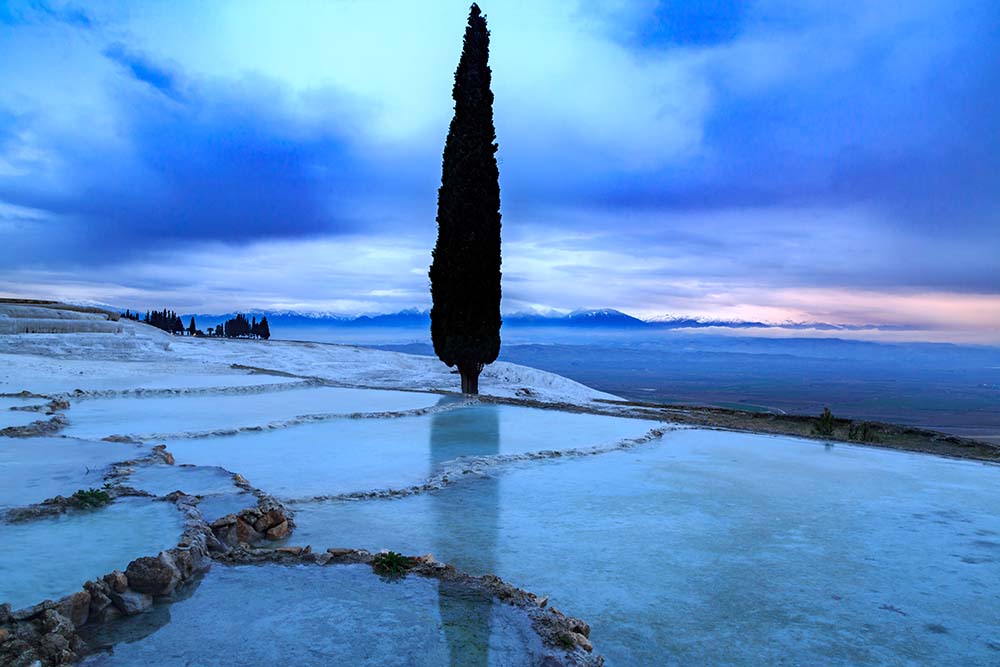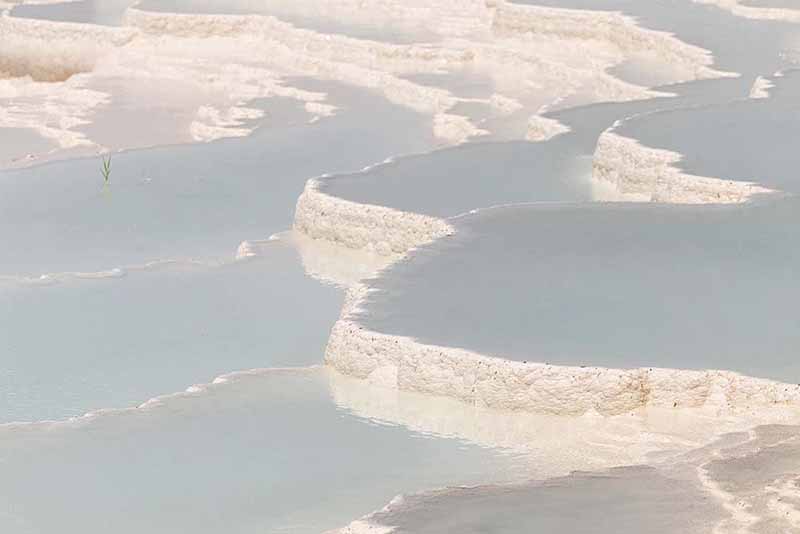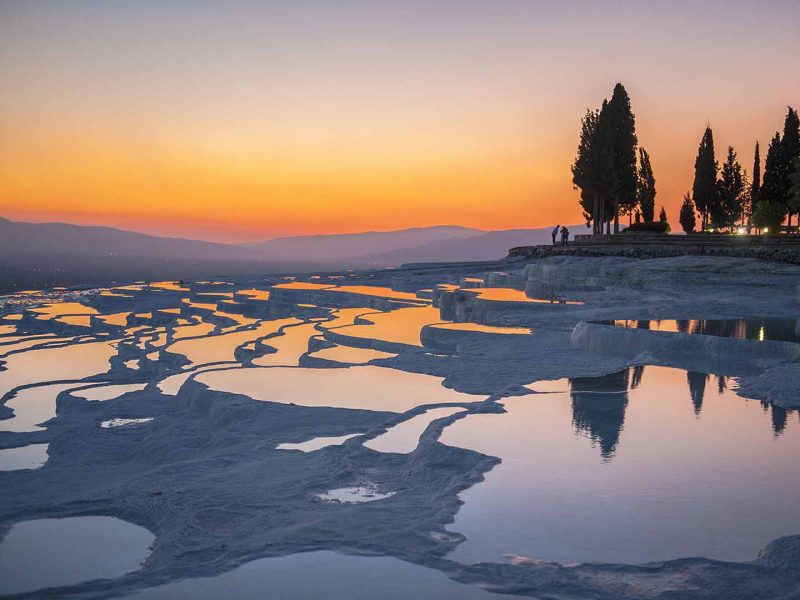Pamukkale is on the UNESCO World Heritage List and is an uncommon natural areas. Denizli‘s history refers to Pamukkale’s history. Denizli was established by the King of Syria II, Antiochustheos, between 261-245 BC . At that time, it was known as Loadikya, the name of King’s wife. In 1070, this city was recognized by the Turks. Over time, and after settlement numbers increased, the center grew out from the ancient city and spread into the boundaries of today’s Pamukkale. Denizli is about 19 kilometers away from Pamukkale’s center, and it is one of the most important touristic cities of our country. You can visit here in both the spring and summer months, but first, we recommend you have information about the areas you want to explore in Pamukkale.
Hierapolis Ancient City, a.k.a Holy City, is in Pamukkale, and you can visit many temples and religious buildings in this area. According to research, this spot was in the past a Phrygian city. However, when we look at the existing literature, we cannot find detailed information about the ancient city’s name from that era. Before being called Hierapolis, we learn from the Mother Goddess Cult that people were living in the city. There is a Medusa figure at the entrance of the ancient city, just above the travertines of Pamukkale. This gate was built in the Roman period. The main street of the city is Frontinus Street. Due to the architectural characteristics of the door at the entrance, it is thought that this street was built in the Roman period. After the earthquake, this street was organized as an Agora. The Triton fountain building is one of two great monumental structures in the city. The North Byzantine Gate and the South Byzantine Gate were also included in the wall system. Apollo Temple was built in the name of the most important god of Hierapolis. Apart from these, Latrina, House with Column Head, and Gymnasium, as well as water canals and walls are located within the historical city’s boundaries.

Natural travertine pools and terraces.
Plutonium Sanctuary was found as the result of excavation by researchers and archaeologists within the boundaries of the ancient city of Hierapolis. It means the Gate of Hell. In the ancient world, this place is regarded as the gateway to the land of death. Hierapolis, which means the Holy City, is called that because of the thermal water in it and there is a cave here that discharges carbon anhydrite gas, which is deadly. The Plutonium Sanctuary is built around the cave. It is long-accepted that the God Pluton and his wife Persephone ruled here. During the excavations, many special items belonging to the gods and other historical artifacts were brought to light.
The Temple of Apollo is located within the Plutonium Sanctuary and it’s known as the religious cave. The main goddess of the region was called Kybele. Sources report that the Mother Goddess Kybele priest entered this cave and was not affected by the poison gas. Remains belonging to the upper structure of the temple exist from the third century AD. The exit to the temple area was made with wide steps, and the theater was built on the side of the hill.According to scholars, the build job began in the year 62 AD and was completed in 206 AD. It was divided into 8 staircases, with seven divisions. It consists of 50 benches. The columns’ spacing are adorned with various sculptures, and many of those sculptures were found in the excavations. There are also marble reliefs behind the stage.

Tall pine tree reflection in Pamukkale travertines.
The archaeological museum of Hierapolis is also in Pamukkale. Pamukkale Hierapolis Archaeology Museum is at the end of Zafer Road, which is within the borders of the ancient city. The museum was used as a Roman bath centuries ago. Today, it consists of 3 total salons and hosts some interesting works.<
Pamukkale Travertines are the formation of a natural rock that you cannot see anywhere else in the world. These travertines bring Pamukkale’s thermal source. In the region, there are 17 water areas with temperatures ranging from 35 to 100 degrees. This source has been used since the Hierapolis Ancient City period. As a result of chemical reactions, water that has calcium carbohydrate in it will transform into a white hue and then form travertine. Weather conditions, time, and heat loss affect the shape and formation. This natural water, which is the symbol of Denizli, has miraculous beauty. Another important area in Pamukkale is the Antique Pool. There are columns in this pool that are purported to hold healing waters. Pamukkale Antique Pool was formed after the seventh-century AD earthquake.

The enchanting pools of Pamukkale in Turkey. Pamukkale contains hot springs and travertines, terraces of carbonate minerals left by the flowing water.
One attraction with these thermal waters is Karahayıt Hot Springs. This is an extension of the thermal waters, and Karahayit Town is located a little farther from Pamukkale. The water composition of the hot springs is like the source water in the travertines. These hot springs, which can be used as drinking water, are a source of healing for many diseases such as intestinal problems, digestive system problems, and stomach and bile tract issues.

